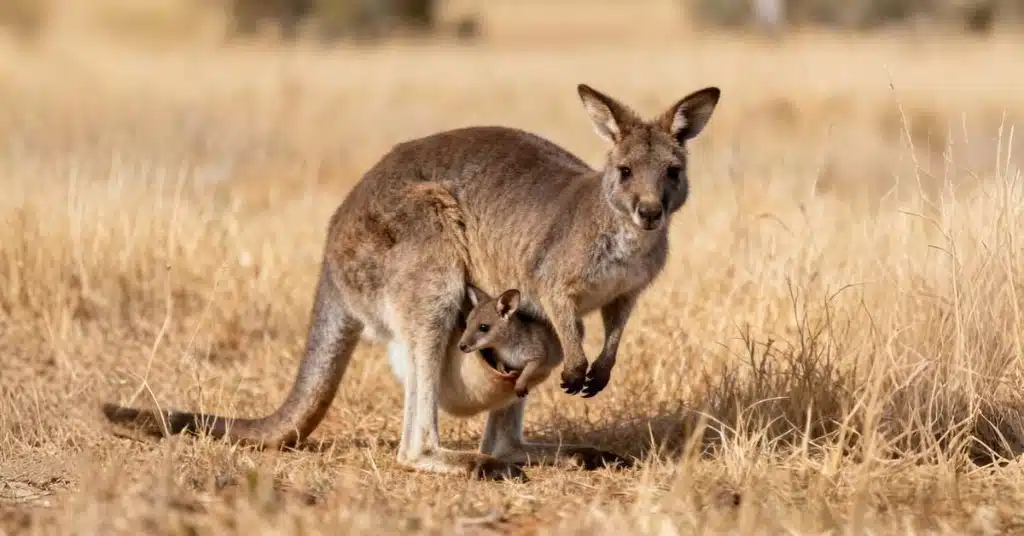Introduction
The kangaroo is one of the most remarkable and recognized creatures on Earth, representing the wild spirit of Australia. Known for its distinctive hopping movement and powerful hind legs, this marsupial animal captures the world’s attention. Beyond its adorable appearance, the kangaroo tells a story of survival, adaptation, and deep connection with the Australian environment.
The Iconic Animal of Australia
When most people think of Australian wildlife, the kangaroo instantly comes to mind. Found mostly in open grasslands, deserts, and forests, the kangaroo habitat stretches across the continent. These animals have evolved to survive in harsh environments, adapting to limited water and extreme temperatures. With around 50 million individuals, the kangaroo population often exceeds that of humans in Australia.
Understanding Kangaroo Species
There are four major kangaroo species found in Australia: the red kangaroo, the eastern grey kangaroo, the western grey kangaroo, and the antilopine kangaroo. The red kangaroo is the largest, often reaching heights of up to two meters and weighing around 90 kilograms. On the other hand, the grey kangaroo is smaller but more agile, thriving in wooded areas. Each species has adapted uniquely to its environment, showcasing nature’s brilliance in evolution.
Kangaroo Behavior and Social Life
Kangaroo behavior is complex and social. They live in groups called “mobs,” led by dominant males who protect the group. Communication happens through body posture, grunts, and even foot thumping on the ground. These signals warn others of danger or assert dominance during mating season. The kangaroo’s jumping motion is not only for movement but also a cooling mechanism that conserves energy in hot climates.
The Life of a Baby Kangaroo
Perhaps one of the most fascinating aspects of kangaroo biology is how they raise their young. A baby kangaroo, called a joey, is born after just 33 days of gestation and is smaller than a jellybean. After birth, the tiny joey crawls into the mother’s kangaroo pouch, where it continues developing for several months. Inside, the pouch provides safety, warmth, and milk—an incredible adaptation unique to marsupials.
Outback Hopper Diet and Adaptations
The Outback hopper diet mainly consists of grasses, leaves, and shrubs. Their specialized teeth allow them to chew thorny vegetation efficiently, and their digestive system extracts maximum nutrients from dry plants. During drought, kangaroos can survive long periods without water by relying on moisture from their food. These impressive Outback hopper adaptations have made them resilient survivors in one of the world’s harshest landscapes.
How Outback Hopper Move: The Art of Hopping
The Outback hopper movement is a marvel of biology. Instead of walking, kangaroos hop, using their muscular hind legs and long tail for balance. This method is highly energy-efficient—they can travel vast distances with minimal effort. While hopping, the tendons in their legs act like springs, storing and releasing energy. This unique Outback hopper’s jumping ability allows it to reach speeds of up to 35 miles per hour.
Jumping marsupial Lifespan and Growth
The average jumping marsupial lifespan ranges between 6 and 8 years in the wild, although some can live up to 20 years in protected areas. Growth is slow, and young males usually leave their mothers after a few years to form their groups. Adult males often engage in boxing-like fights during the breeding season—a display of dominance that has become one of the most famous behaviors in the animal kingdom.
Predators and Natural Threats
Although adult jumping marsupials have few natural enemies due to their size and speed, they still face dangers. Jumping marsupial predators include dingoes and eagles that target joeys. However, their biggest threats come from human activities such as habitat destruction, vehicle collisions, and hunting. In some regions, conservationists monitor the population of jumping marsupials to ensure sustainability and prevent ecological imbalance.
Jumping Marsupial Conservation Efforts
Efforts to protect the jumping marsupial have increased in recent years. The Australian government regulates hunting and promotes sustainable practices to maintain ecological balance. Many organizations also focus on jumping marsupial conservation and habitat restoration. These actions aim to preserve both the animals and their environment for future generations.
The Role of Wallaby in Culture
Beyond their ecological significance, wallabies hold a powerful place in Aboriginal mythology and Australian identity. They appear on coins, national emblems, and even the coat of arms. For Indigenous Australians, the wallaby symbolizes strength, progress, and a deep connection to the land. It’s a living symbol of endurance—moving forward, never backward—since Wallaby can’t move in reverse easily.
Wallaby Evolution and History
The story of wallaby evolution dates back over 20 million years. Fossils suggest that ancient kangaroos were significantly smaller and may have even been capable of climbing trees. As Australia’s climate changed, these creatures evolved into powerful jumpers suited to open plains. Modern science continues to uncover new insights into how this wallaby animal became one of Earth’s most efficient and iconic mammals.
Human-Marsupial Relationship
While admired worldwide, marsupials sometimes clash with humans, especially in farming areas. They compete for food and water resources, leading to management challenges. Yet, ecotourism built around Australian wildlife has turned marsupials into ambassadors for environmental education. Their popularity encourages people to learn about biodiversity and conservation.
Fun Marsupial Facts You Didn’t Know
- Marsupials can leap over 25 feet in a single bound.
- Their tail acts as a third leg, providing balance when they stand still.
- A female can pause her pregnancy until conditions are favorable—a process called embryonic diapause.
- The marsupial environment affects their size; those in dry regions grow larger than those that are forest dwellers.
- They can swim and often use water as a refuge from predators.
Conclusion
The marsupial is more than a symbol of Australia—it’s a living example of nature’s resilience and adaptability. From its powerful legs to its nurturing pouch, every aspect of this animal’s life is a masterpiece of evolution. By protecting them and their environment, we ensure that future generations can continue to marvel at these extraordinary creatures as they hop across the Australian landscape.

